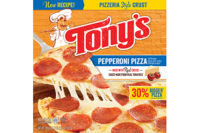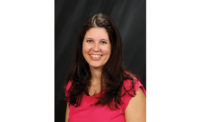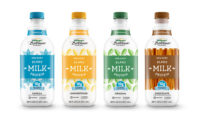If You Build It, They Will Come




When it comes to designing and building cold food warehouses, it doesn’t take voices in the cornfield to make dreams come true. That’s because today’s advanced concepts make it possible for design-build providers to develop a myriad of customized solutions that offer sustainability, energy savings and due diligence.
ESI Group USA, for instance, offers a plethora of turnkey services, including site selection, due diligence studies, cost/benefit analysis, processing layouts, low-temperature warehousing, on-site construction management services, process automation and controls, blast and spiral freezers and automatic storage retrieval facilities.
“Reducing operating costs is not a new design criteria, so the major target areas in our facilities have been well ferreted out with advanced control, including variable frequency drives on the refrigeration systems, changes to battery charging equipment and procedures and increased use of occupancy sensors and LED lights in the warehouse, including the freezer operations,” says Jack Michler, regional manager for the Hartland, Wis., company.
Primus Builders Inc., Woodstock, Ga., provides solutions that are rooted in helping its customers meet their goals, whether they be automation, safety, location or sustainability.
“Owners desire less human contact and more automation. Food safety and tracking has become a serious priority. There is a resurgence in port- and rail-side
“Owners desire less human contact and more automation. Food safety and tracking has become a serious priority." |
facilities. Many owners recognize the benefits of being good stewards of the environment,” says Matt Hirsch, vice president of sales. “We provide these services to a wide variety of cold storage and food processing clients, including dairies, chicken, pork and beef processors, pizza processors and grocery cold storage and distribution centers across the country.”
For its part, Randall Manufacturing takes pride in meeting sustainable product initiatives. That’s why it developed InsulWall, a 100% reusable product that consists of a 5-foot-wide panel design that uses a Velcro connection for each reconfiguration and re-use.
“A thermal curtain wall can be used for isolating conditioned space in the warehouse for energy savings, increased product integrity, employee comfort or to follow the ever-increasing demand of federal regulation,” according to Todd Jessup, territory manager for the Elmhurst, Ill.-based company. “By design of the product, facility owners can reconfigure their walls to allocate as much or as little temperature-controlled space as needed.”
LEEDing the way to a greener, safer facility
LEED (Leadership in Energy and Environmental Design)-certified facilities lead the way in terms of refrigerated and frozen food processors’ demands.
“LEED has picked up momentum to where nearly all of our customers on major projects are asking about it and requesting analysis on the resources required to certify their facilities in LEED NC or LEED-existing buildings,” Michler says. “Only between 10-20% of these projects ultimately pursue LEED certification as the LEED credit criteria are not tailored to large, industrial refrigeration projects and the benefits may not outweigh the administrative costs; however, many of the same LEED strategies are implemented on every project.”
A typical project, for example, “would result in more than a 30% energy reduction for the LEED EA Credit #1 – Optimize Energy Performance,” Michler adds. “A customer recently built a replacement facility in central Texas with twice the square footage and three times the cubic storage volume. Their monthly energy bills are 36% lower in the new facility. On a square-foot basis, this is a 72% savings.”
Randall Manufacturing also provides a selection of LEED-certified insulating materials.
“In most cases, the recycled insulation offers as good or better insulating capabilities, competitive pricing, more favorable permitting/fire code ratings and offer the same warranties and life expectancy of non-green InsulWall insulation,” Jessup adds.
Likewise, A M King Construction Co., Charlotte, N.C., incorporates sustainable elements that provide a return on investment of five years or less, says Stuart Jernigan, preconstruction manager. These elements include “LED or induction lighting, variable frequency drives, maintenance-free floor toppings, solar hot water systems and grey water systems,” he says.
Many processors are also seeking SQF (Safe Quality Foods) or other similar certifications, Michler adds.
“Utilization of site and building security systems has been instituted to control facilities from both outside and inside contamination risk issues. More facilities are utilizing hygienic air handling systems that provide both micro filtration as well as fast moisture-flushing mitigation after clean-in-place cycles,” Michler adds. “For distributors, shipping and receiving staging docks have increased in depth to mitigate warehousing traffic congestion. In addition, we have seen more use of flow racking systems, which can provide more efficient utilization of warehousing space.”
Preparing for the next play
Flexibility is a must in today’s marketplace, says Hirsch.
“In the past, clients have had the luxury of long-term contracts and a longer business cycle,” he adds. “Today, success is achieved by those who can adapt quickly and efficiently. Our clients are requesting that their buildings be designed to accommodate future needs.”
That’s why Primus provides building designs that are adaptable for a wide array of storage temperatures, storage configurations and equipment layouts, Hirsch says.
“Because we understand the challenges our clients may encounter in the future, we recommend small upgrades to be incorporated now that can bring large benefits when change is required,” he adds.
Warehouse design-build providers need to also predict the unpredictable, says Jessup.
“Acquisitions, regulation, process improvements, new product launches, discontinued products, manufacturer’s expectations, on and on. We’ve seen it all. The cold chain gets more and more complex in time. Thus, the need for flexibility to be able to adapt is essential in a highly sophisticated, competitive world, especially in an investment like a facility or warehouse that could be used for many, many years to come,” he adds.
If you build it, they will come, especially when your cold food plant is sustainable.
Looking for a reprint of this article?
From high-res PDFs to custom plaques, order your copy today!











